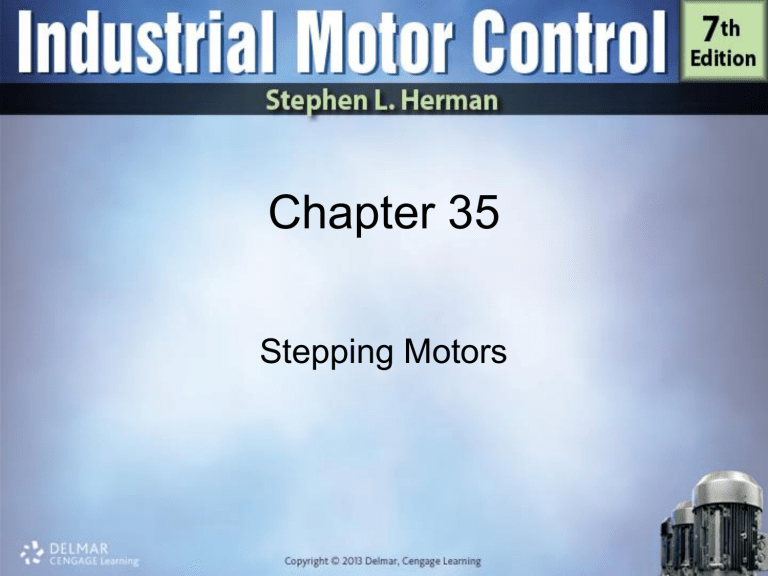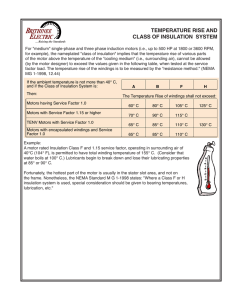
Chapter 35 Stepping Motors Objectives • Describe the operation of a DC stepping motor • Describe the operation of a stepping motor when connected to AC power • Discuss the differences between stepping motors and other types of motors • Discuss the differences between four-step and eight-step switching Introduction • Stepping motors: convert electrical impulses into mechanical movement – Output shaft moves through a specific angular rotation each time motor receives a pulse • Each time a pulse is received, motor shaft moves a precise amount – Controls load: • Speed, distance, and position Theory of Operation • • • • • Like magnetic poles repel Unlike magnetic poles attract In Figure 35-1: rotor is permanent magnet In Figure 35-2: four stator poles In Figure 35-3: rotor between pole pieces Theory of Operation (cont’d.) • For better stepping resolution: – Most stepping motors have eight stator poles – Pole pieces and rotor have teeth machined into them • Number of teeth determines angular rotation Windings • Motor in Figure 35-5: – Common terminal of two windings is connected to ground of an above- and belowground power supply • Terminal 1 is connected to common of a singlepole double-throw switch (switch #1) • Terminal 3 is connected to the common of another single-pole double-throw switch (switch #2) Windings (cont’d.) • Motor in Figure 35-5 (cont’d.): – One stationary contact of each switch is connected to positive or above-ground voltage – Other is connected to negative or belowground voltage – Polarity of each winding is determined by position setting of its control switch Windings (cont’d.) • Stepping motors can also be wound bifilar: – Two windings wound together – Twice as many windings as three-lead type – Smaller wire required in windings – Results in higher wire resistance in winding – Produces better inductive-resistive (L/R) time constant for bifilar wound motor Four-Step Switching (Full Stepping) • Each time one switch changes position, rotor will advance one fourth of a tooth – After four steps, rotor has turned angular rotation of one “full” tooth • If the rotor and stator have fifty teeth, 200 steps is required for one full revolution Four-Step Switching (cont’d.) Eight-Step Switching (Half Stepping) AC Operation • Stepping motors can be operated on AC voltage – Become two-phase AC synchronous constant speed motors – Classified as permanent magnet induction motor Motor Characteristics • When stepping motors are used as twophase synchronous motors: – Able to start, stop, or reverse direction of rotation almost instantly – Motor will start within about 1 ½ cycles of applied voltage and stop within 5 to 25 milliseconds Motor Characteristics (cont’d.) • Motor can maintain a stalled condition without harm – Rotor is a permanent magnet – No induced current is in rotor – No high inrush of current occurs when started Motor Characteristics (cont’d.) • Same starting and running currents – Simplifies power requirements • Due to permanent magnetic structure of rotor, motor provides holding torque when turned off – If more holding torque is needed, DC voltage can be applied to one or both windings when motor is off Summary • Describe the operation of a DC stepping motor • Describe the operation of a stepping motor when connected to AC power • Discuss the differences between stepping motors and other types of motors • Discuss the differences between four-step and eight-step switching



